Our Houston Zoo Plastic Bottle Sculpture
In celebration of the Washed Ashore exhibit, which contains sculptures of plastics found washed up along coasts and beaches, the Houston Zoo has used YOUR recycled plastic bottles to create a unique plastic sculpture of our own!
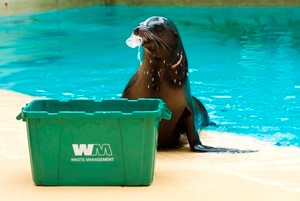
Each time you visit the Zoo you have the option to take actions, like recycling plastic bottles, to help protect wildlife as you walk throughout the Zoo. The plastics and trash that build up along coasts are things we use daily that are either left on beaches or simply not recycled, often blowing and falling out of trash cans to be taken by rains into storm drains and eventually released into our oceans. By recycling items like plastics, you help to ensure that wildlife like sea turtles don’t interact with them in the wild, as they often eat plastics that look like jellyfish in the water or can get entangled in plastics like soda ties. Washed Ashore is a great visualization of how we forget about our trash, and how such a large amount of it can actually be reused and end up again in our hands as new products rather than in the environment affecting animals.
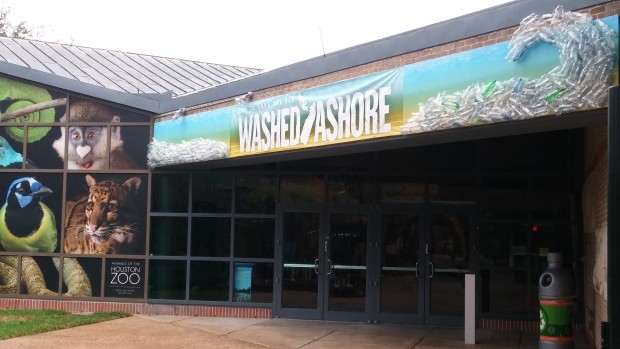
Running from January 15 to April 15, the first item you will see when walking into the Washed Ashore exhibit is an installation above your head at the entrance that includes the ‘Ocean Wave’ sculpture of plastic bottles from the recycling bins on Zoo grounds…from the bottles you recycled at your visit here! Our innovative Zoo teams were able to create this sculpture with the environment in mind, sourcing materials that could easily be recycled or reused on Zoo grounds, and planning for the sign itself to be able to be disassembled and used again in future exhibits. Your actions in recycling at the Zoo have allowed these bottles to have not just a second life, but countless more after we eventually recycle this sculpture in the future.
Check out some of the process of how our Theming and Design Team constructed the ‘Ocean Wave’ sculpture:
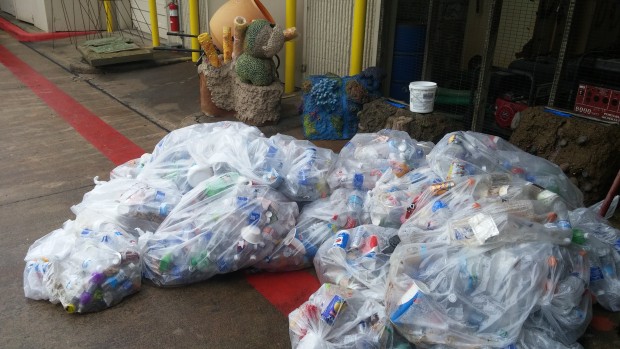
Many, many plastic bottles were gathered straight from the recycling bins you use when visiting us! It may seem a bit gross right now, but watch how what is considered trash evolves to a beautiful sculpture, especially when visiting the huge jellyfish sculptures at the Washed Ashore exhibit.
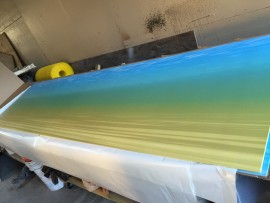
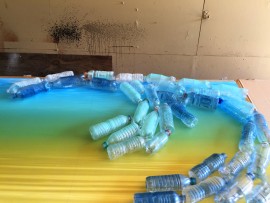
We started out with a background of the ocean, and then began to form our sculpture bottle by bottle.
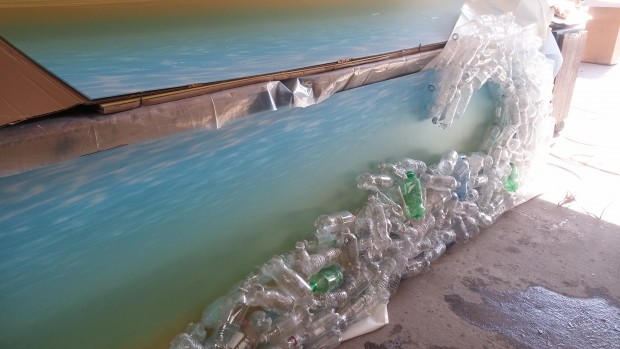
Once you see the transition it’s easier to visualize that the things we throw away are often not trash at all, but resources we can use to make new things. Take a look at what is in your trash daily, and imagine if those items could have a second life away from landfills or the environment that wildlife calls home.
For an advanced challenge, ask yourself if you can reduce the plastics you buy to lessen the amount of waste you have overall. Reducing the need for one-time-use plastics lessens the need to create more items like plastic bottles.

At the Zoo, your options to take action for wildlife start simply with your admissions ticket, as a portion of each ticket funds local and global wildlife projects the Houston Zoo works with. As you make your way through the Zoo, you will see easy options to take action to protect wildlife in doing things like refilling your reusable water bottles, planting pollinator gardens, learning about ocean-friendly seafood options, recycling your cell phones, choosing earth-friendly ingredients, and even by visiting our gift shop to get a reusable tote (the Zoo is plastic-bag free!). Learn more about all of our Take Action initiatives you can do at the Zoo on our webpage.
This is a sustainability reference document.
